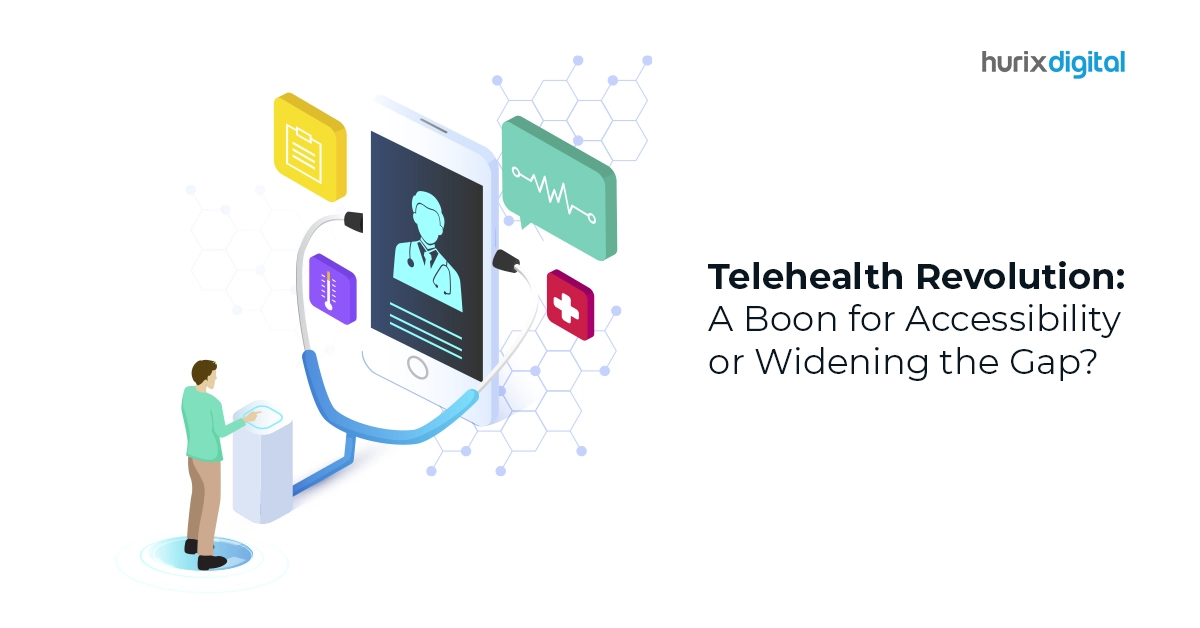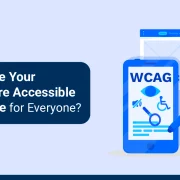
Telehealth Revolution: A Boon for Accessibility or Widening the Gap?
Summary
Examine the impact of telehealth on accessibility in healthcare. This article weighs the benefits and potential challenges of telehealth in improving or widening access.
Remember the days when a trip to the doctor meant a long wait in a crowded waiting room, shuffling through endless paperwork, and hoping you grabbed the right insurance card? Thankfully, those days are becoming increasingly distant. The healthcare landscape is undergoing a seismic shift, driven by the telehealth revolution.
Since the COVID-19 disruption, medical technology has become mainstream in almost every part of the world. Patients, too, have started to appreciate the benefits of telehealth services, as 88% of people now want to continue using telehealth services for their medical consultations.
But does telehealth make healthcare easier to access for everyone, or does it create new problems for some people? This blog explores telehealth accessibility, looking at both the good parts and the challenges we need to fix so everyone can benefit. Let’s get exploring!
Table of Contents:
- What Are Telehealth Services?
- Benefits of Telehealth Services to Explore
- Challenges to Telehealth Accessibility
- Bridging the Gap Towards Inclusive Telehealth
- Make Telehealth Services Accessible with Hurix Digital
What are Telehealth Services?
Telehealth, also known as telemedicine or digital healthcare, is the practice of delivering quality healthcare services remotely using digital infrastructure.
Using this technology, patients can easily connect with healthcare providers for video consultations and get the services they need without being physically present in a medical center. This allows patients to get quality healthcare services at their doorstep, using means like video calling, phone calls, or chatting through online messaging platforms.
Telehealth services can include a wide range of services, such as:
- Remote consultations
- Access to information and patient records through mobile healthcare facilities (mHealth)
- Remote Patient Monitoring (RPM)
- Patient Portals allow patients to perform multiple healthcare-related actions using an app or device, such as buying medicines, scheduling a checkup, or taking additional actions
This way, telehealth offers a glimpse into a future where healthcare is more convenient, accessible, and potentially even more effective.
Also Read: What is the European Accessibility Act 2025?
Benefits of Telehealth Services to Explore
By connecting patients to doctors virtually, telehealth has revolutionized how we access medical services. Some of the benefits in terms of telehealth accessibility include the following:
1. Breaks Down Geographic Barriers
There was a time when medical facilities could cater only to patients who lived within the vicinity of the facility. However, with telehealth, distance becomes a non-issue.
Patients in remote areas or with limited transportation can now connect with specialists they might not have been able to see otherwise. This is particularly beneficial for consultations with rare disease specialists or for managing complex chronic conditions. Patients only need a strong internet connection and a smartphone or other device to access world-class healthcare facilities.
2. Increased Convenience & Efficiency
Gone are the days of battling traffic and taking time off work for a doctor’s appointment. Telehealth allows virtual consultations from the comfort of your home, saving valuable time and money.
No more waiting rooms or long commutes—simply log in at your scheduled appointment time for a more convenient healthcare experience. If the medical representative requests a thorough checkup, patients can schedule a physical appointment. This helps make healthcare more efficient and allows healthcare workers to cater to more patients.
3. Promotes Continuity of Care
Telehealth facilitates ongoing communication between patients and healthcare providers, promoting continuity of care. Through virtual appointments, patients can easily follow up with their providers, ask questions about their treatment plans, and receive timely guidance on managing their health conditions.
This continuity of care is especially beneficial for individuals with chronic illnesses who require regular monitoring and adjustments to their treatment plans.
By staying connected with their healthcare team through telehealth, patients can receive the support they need to manage their conditions and improve their overall health outcomes effectively.
Challenges to Telehealth Accessibility
Although telehealth accessibility solutions are robust, they are not without flaws. Let’s explore some of the healthcare accessibility challenges that need to be overcome for telehealth to reach its full potential:
1. Digital Divide
The reality is that not everyone has equal access to the technology needed for telehealth. Lack of access to reliable internet, computers, or smartphones can exclude low-income populations, rural communities, and older adults who may not be comfortable using technology.
This “digital divide” creates a barrier to entry and risks exacerbating existing healthcare disparities.
2. Limited Digital Literacy
Even if patients do have access to technology and infrastructure to access telehealth services, not every patient is tech-savvy.
Tasks like scheduling appointments online or participating in virtual consultations may prove challenging, discouraging engagement. Addressing this literacy gap is vital to ensuring inclusivity in telehealth adoption.
Bridging the Gap Towards Inclusive Telehealth
Below are some of the strategies that can help make telehealth more accessible:
1. Preferring Platforms with a Simple User Interface
Telehealth platforms need to be designed with the user experience in mind. If the platform gives too much information or makes it complicated for patients to get the services they need, they may not use it long-term.
Ensure that simple and intuitive interfaces with clear instructions and accessibility features are used. Platforms should be compatible with a wide range of devices and offer multiple communication options (phone, video, text chat) so that users can choose the option they are comfortable with.
2. Leverage Advanced Technology with Ease
Just having a phone call with a patient may not help the medical professional understand their issues. Instead, if they had access to a video camera or other advanced features, the outcome of telehealth consultations could be dramatically improved.
Patients can have initial consultations or follow-up appointments virtually while scheduling physical examinations or procedures when necessary. This flexibility allows for a more comprehensive and personalized approach to healthcare.
Additionally, telehealth platforms can offer advanced features, such as AR-VR for virtual checkups, to dramatically increase the level of diagnostics, allowing doctors to make more informed decisions.
3. Training & Support
Not everyone is tech-savvy. Offering training programs or dedicated support can empower patients to navigate telehealth platforms confidently. This could involve providing clear, step-by-step guides, instructional videos, or even in-person training sessions for those who need extra assistance.
Also Read: Designing for All: The Evolution of Accessibility Standards in Hospitality
Make Telehealth Services Accessible with Hurix Digital
The telehealth revolution is here to stay, and its impact on healthcare accessibility is undeniable. However, for this promise to become a reality, addressing the existing accessibility challenges is crucial.
At Hurix Digital, we are committed to developing innovative healthcare solutions that are accessible and user-friendly for all. We believe that technology should empower patients and healthcare professionals alike.
By partnering with healthcare providers, we help create effective training programs to help healthcare workers understand how to provide quality access in the age of digital healthcare.
Get in touch to learn more!

Vice President – Digital Content Transformation. He is PMP, CSM, and CPACC certified and has 20+ years of experience in Project Management, Delivery Management, and managing the Offshore Development Centre (ODC).




